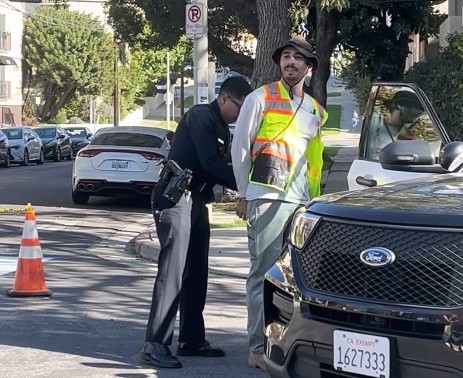The new Route 43 bus in Middletown, Delaware, stops at many popular places: the local high school, the retail shopping district, and the Methodist church, to name a few. But the park-and-ride that helped riders access the bus was clogged with cars, which the state DOT attributed to higher transit demand.
 The Middletown park-and-ride, before its stimulus tune-up. (Photo: DDOT)
The Middletown park-and-ride, before its stimulus tune-up. (Photo: DDOT)So the stated is using federal stimulus money on a park-and-ride expansion, adding more than 100 new parking spaces but also a bicycle and pedestrian path that connects to the facility. A new traffic signal will be put up to regulate vehicle entrance to the park-and-ride.
The cost of the project was initially estimated at $1.4 million, but Sen. Tom Carper (D-DE) noted at a congressional hearing yesterday that the actual bill is running closer to $600,000.
"We've got a lot of contractors hungry for work and anxious to bid," Carper said.
Even after placing its low winning bid, the construction firm that won the park-and-ride contract is reversing plans to scale many of its workers down to part-time status.
Christopher Mihm, a managing director at the non-partisan Government Accountability Office (GAO), told Carper that his state was not alone in seeing transportation stimulus projects come in under budget thanks to the recession:
It does show that the economy is in bad shape ... But it's also a good deal in that then [states] are able to do additional infrastructure projects or additional transportation projects because of that.
Delaware is spending 27.9 percent of its stimulus funds on bike-ped projects, according to a June report from Smart Growth America (SGA), making it one of only three states to earn an "outstanding" rating.
(Revisit the first installment in Streetsblog Capitol Hill's Stimulus Spotlight series here.)





